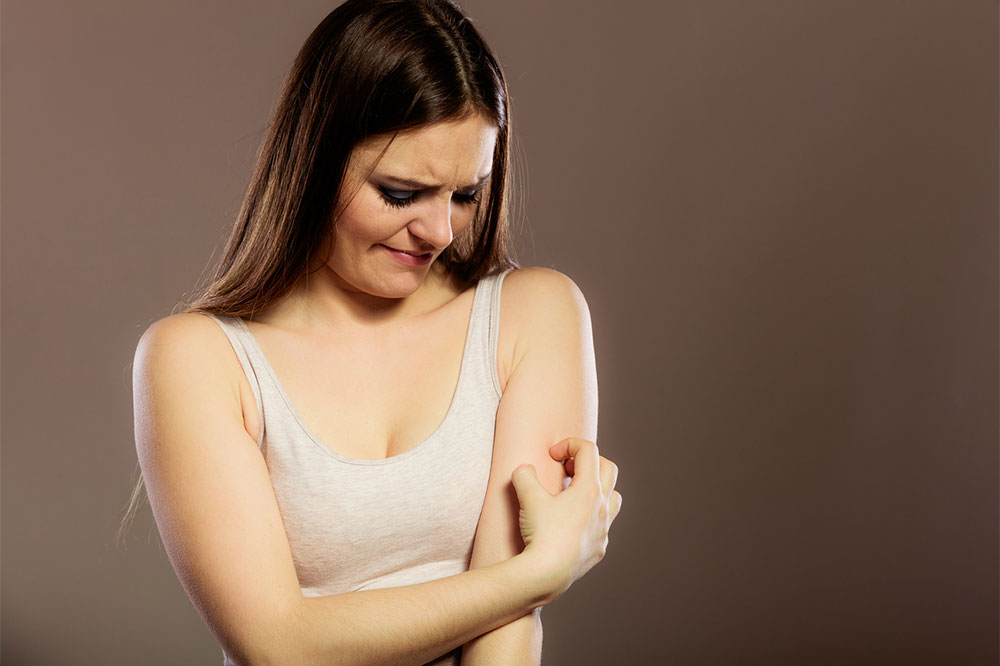
Essential things to know about skin rash
Abnormal changes on the skin, such as swelling, irritation, pain, redness, soreness, and blisters, are usually referred to as skin rash. Skin rash can either be confined to a specific body area or spread throughout. The intensity depends on the cause, such as an underlying health condition or allergy, and the skin’s sensitivity. In most cases, it can be treated at home. Here are the essential things to know about a skin rash.
What causes skin rash?
Various factors can cause a skin rash, but the most common triggers include:
- Contact dermatitis
This is one of the most common causes of skin rash. Contact dermatitis is a condition that occurs when the skin comes into contact with certain substances, such as additives in beauty products, dyes to color clothes, chemicals like latex or rubber, and even plants like poison ivy and sumac. - Side effects of treatment
Individuals can develop skin rash as a side effect of specific treatments. Some develop photosensitivity. It is a condition where the skin becomes oversensitive to sunlight. Photosensitivity leads to rashes, fever, and other symptoms that may imitate a sunburn. - Infections
Certain bacteria, viruses, and fungi can induce skin rash by causing infection in the body. The intensity and nature of the infection vary, and the person may have to consult a doctor in this scenario. - Autoimmune conditions
Sometimes, the body’s immune system attacks healthy cells by mistake, causing skin rashes. Lupus is one such example where the affected individual may develop butterfly-shaped rashes on the face.
What are the types of skin rash?
Eczema is one of the most common health conditions characterized by rash, inflammation or redness of the skin, and scaly or itchy skin. Although not contagious, it can affect both children and adults.
Atopic dermatitis or atopic eczema is another prevalent skin rash. It is mainly associated with allergic conditions like asthma and hay fever. Infants are more likely to get affected and develop an itchy rash on the face and scalp. Although the risk is lower, adults and children also experience atopic eczema.
The other lesser-known types of skin rash include:
- Granuloma annulare
It usually affects the hands and feet, and the rashes appear as bumps in a circular pattern. Granuloma annulare is more common among children and youth, and girls are at a higher risk. - Lichen planus
It is a rash that forms when the immune system attacks the cells of the skin or mucous membranes. The rash is accompanied by swelling and irritation on the hair, nails, mucous membrane, etc. - Pityriasis rosea
It is a large circular spot on the chest, abdomen, or back, often followed by lesions. Doctors do not know what causes pityriasis rosea, but some studies point out to a viral infection.
Does skin rash require treatment?
Not all kinds of skin rash require treatment. In many cases, the rash disappears on its own. However, if an individual experiences symptoms like sore throat, joint pain, redness around the affected area, or tender skin along with pus secretion, they must visit a doctor.
In addition, the following signs may also demand a doctor’s attention:
- Discoloration of the skin
- Issues with breathing
- Increasing intensity of pain
- Fever
- Swelling
- Diarrhea or vomiting
- Throbbing neck pain or headache
Most often, people outgrow skin rashes with time. But for some, the symptoms keep recurring throughout their life. In such cases, a thorough diagnosis is recommended. Diagnosis may include a patch test, blood test, or biopsy. There is no health risk associated with these tests, except for biopsy, where there could be slight bleeding, bruising, or soreness. Depending on the results of these tests, the healthcare provider determines the best possible course of treatment.
What are the remedies for skin rash?
Below are a few home remedies to reduce the discomfort caused by rashes and speed up recovery:
- Use warm water and mild soap, such as baby soap with fewer irritants, to clean the area.
- Avoid covering the rash, rubbing, or scratching it as it worsens the condition.
- Do not apply newly purchased moisturizers and lotions to the inflamed or irritated skin.
- Have an oatmeal bath to counter inflammation, pain, and itching.
- Apply coconut oil to the skin for moisturization, but test it on a small area first.
- Control the humidity and temperature in the room; dry skin can lead to rashes.
It is important to note that home remedies only help if the rash is not severe. People can use pain-reducing treatments if they experience mild pain. However, it is essential to consult a doctor first.




